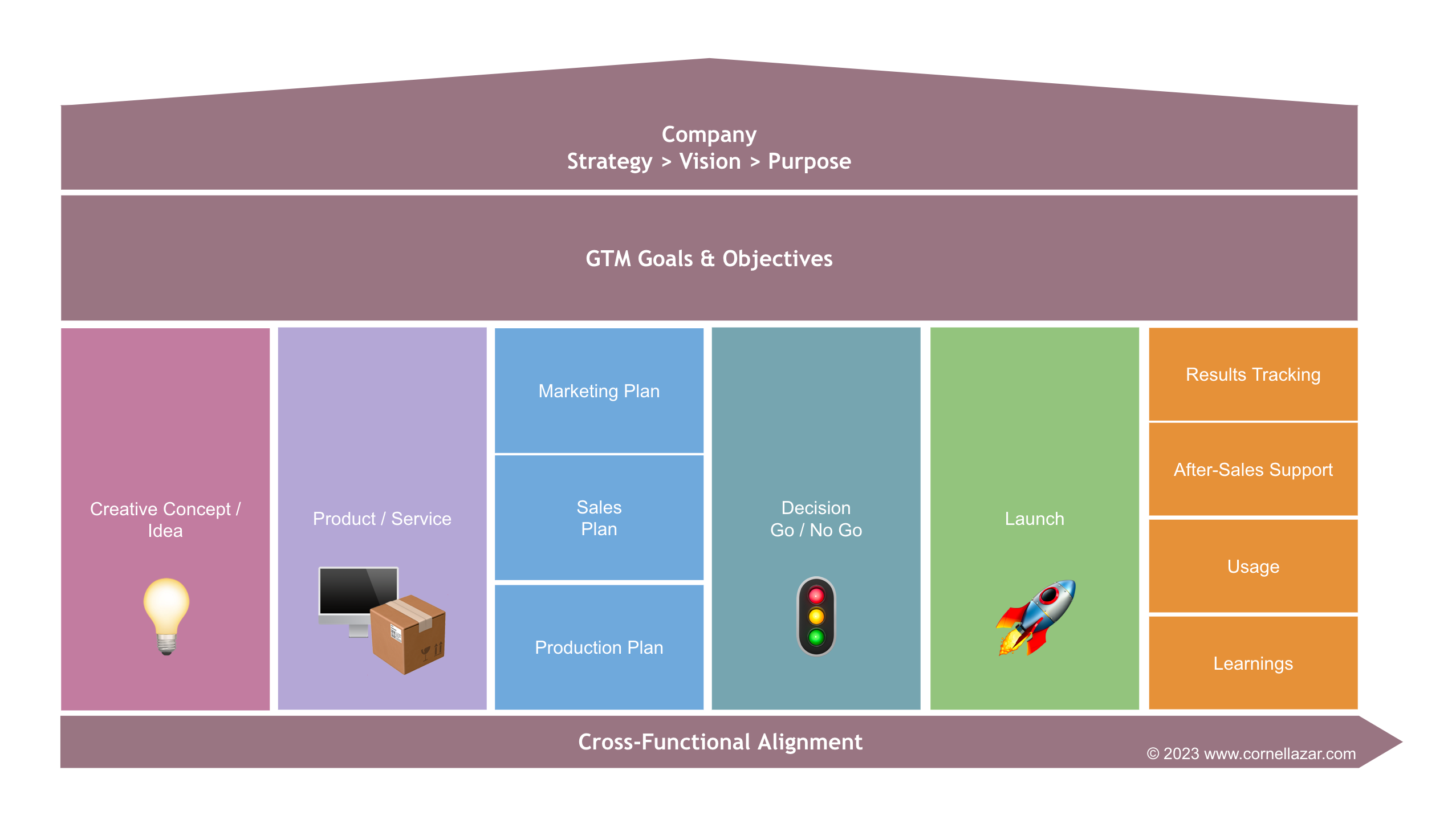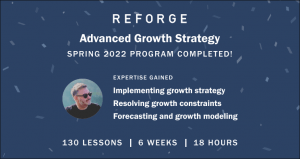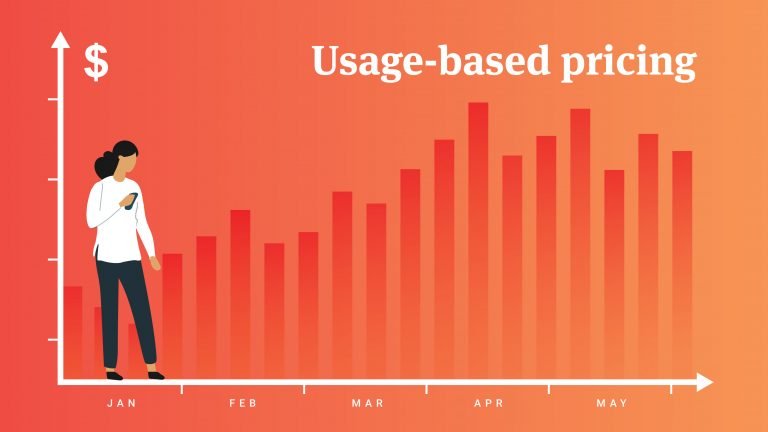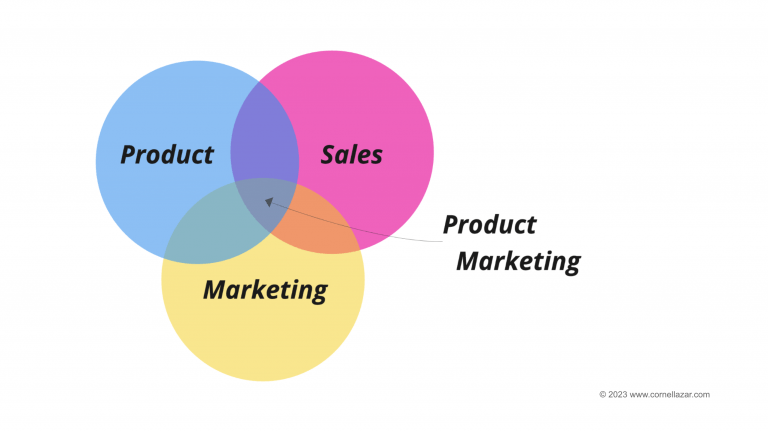Creating an effective go-to-market (GTM) strategy is a critical part of any successful product launch. A GTM strategy outlines the steps and tactics required to take a product from development to market launch, and eventually to achieve sales and profitability goals.
It is a complex process that requires a thorough understanding of the target market, customer needs and preferences, as well as an effective marketing plan.
A well-planned GTM fosters teamwork, eliminates gaps and results in optimal outcomes in your target markets.
"Building a Comprehensive GTM Strategy" by Cornel Lazar Tweet
In this article, I will delve into the steps required to build a comprehensive GTM strategy.
Stages of a cross-functional GTM
- Identify target market & target customer
- Positioning & Message Questions
- Internal Product Training
- Launch Marketing Plan
- Marketing Content / Who does what
- Pre-Launch Team Preparations
- Launch
- Post-Launch Strategy / Report
Identify target market and target customer
The first step in building an effective GTM strategy is to identify the target market and customer. This involves understanding the Total Addressable Market (TAM), Serviceable Addressable Market (SAM) and Serviceable Obtainable Market (SOM) for the product.
TAM refers to the total market demand for the product, while SAM is the portion of the market that can be realistically served by the company. SOM, on the other hand, is the portion of SAM that the company can realistically capture.
Next you want to build your ideal customer profile (ICP). Where available make use of quantitative and qualitative data.
Qualitative customer research should be conducted to determine the characteristics of your target customer, their needs, preferences, and pain points.
On average and particularly early stage startups, aim to identify 12-15 representative customer types and understand their unique needs and pain points. By doing this, the company can develop a product that meets the specific needs of the target customers and tailor a marketing strategy that resonates with your audience.
Positioning & Message Questions
The next step is to develop a positioning strategy and messaging for the product. This involves answering questions such as who the product is for, what the product does, and how it is different from the competition. The positioning strategy should be developed with the target customer in mind, and it should focus on the unique selling point (USP) of the product.
The USP should be backed up by proof, such as data or testimonials, to demonstrate the credibility and effectiveness of the product. It is also important to consider the product name, category, and competitors, as well as the customer segment when developing the positioning strategy and messaging.
Internal Product Training
Before launching the product, it is important to ensure that the internal team is fully trained on the product. This includes the sales, field marketing, customer service, customer success, and PR teams. The internal team should have a thorough understanding of the product’s features, benefits, and USP, as well as the target market and customer.
Launch Marketing Plan
The launch marketing plan should be developed by the team, working backward from the target goals. The ideas should be prioritized based on ICE-scoring, which stands for Impact, Confidence, and Ease. The marketing plan should be developed in collaboration with the category or channel managers, who will help to determine the most effective tactics for reaching the target customer.
Marketing Content / Who does what?
Creating effective marketing content is a critical part of the GTM strategy. This includes creating an asset requirements document, FAQs, demos, landing page, email, ads, sales collateral, blog content, and other marketing materials. It is important to identify who will be responsible for each aspect of the marketing content, such as copywriting, design, sign-off, and development.
Pre-Launch Team Preparations
Before the launch, it is essential to ensure that everyone involved in the launch is ready and has the necessary tools and information to carry out their tasks. This includes establishing team and individual controls to ensure that everyone is on the same page and that tasks are carried out efficiently. It is also important to establish channels for instant communication in case of emergencies, such as Slack or WhatsApp. Furthermore, processes should be put in place to address any unexpected issues that may arise during the launch.
Launch
A launch is not the end of the planning phase, it is the begin of an on-going optimisation phase. From the second you launch, you are collecting data to learn and optimise. It is essential to be monitoring performance and responding to customer feedback, making any necessary adjustments, and staying on top of any emerging trends or changes in the market.
Post-Launch Strategy / Report:
The post-launch strategy involves analysing the success of the launch and determining next steps for your product or service. This includes monitoring customer feedback, tracking sales, and analysing data to determine what worked and what didn’t. The results of this analysis are then used to develop a post-launch report that outlines the success of the launch and provides insights for future marketing strategies. The post-launch report is a crucial tool for future planning and helps to ensure that the product or service continues to succeed in the market.
Resources
To download the graphics, click the image, then right-click “Save As”.

















